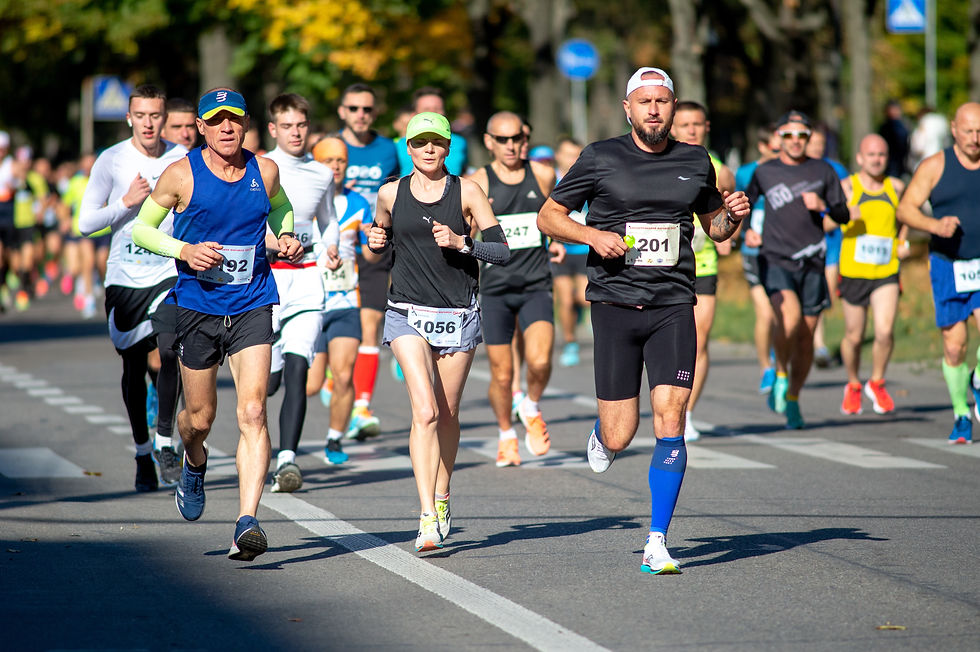How to pace your runs: A brilliant example for you to learn from
- Jonathan Brown
- Aug 7, 2024
- 3 min read
Updated: Aug 8, 2024

Today's article is about how the speed and pacing of your runs can drastically effect the end result. Running pace calculation is one of the most technical elements of training; so keep reading to get some idea of how you can change your own training paces to help you progress.
What you see below are two almost identical workouts that at the same time couldn’t be more different.
The distance is the same, the time of day they were undertaken was similar, both workouts were done fasted, weather conditions were similar, they were both run intentionally at very slow paces and the time it took to complete them was almost identical.
**Ignore the fact that one says 12.5km and other 12.4km and the differences in elevation, the Whoop strap recording this isn’t always perfect with distance. But I can assure you that the start and finish were identical between the two.
WORKOUT NUMBER 1


WORKOUT NUMBER 2


The biggest difference between the two is the time spent running in each workout was VASTLY DIFFERENT.
TIME SPENT RUNNING | TIME SPENT WALKING | |
WORKOUT 1 | 47 mins | 47 mins |
WORKOUT 2 | 18 mins 48 secs | 1 hour 15 mins |
The run/walk intervals of Workout 1 were 1 min on/off. In Workout 2 it averaged 12 seconds of running/48 secs walking every minute.
Yes you read that correctly. One workout had 28 minutes and 52 seconds MORE running than the other, yet their times are almost identical. The pace per km was only 5 seconds different over the distance. How is that possible?
Looking at the data a little deeper you’ll see the most important factor related to the goals of these two workouts. Workout #1 was planned to be run at an easy pace, trying to move at a gentle pace with the intention of keeping the heart rate fairly low. The rest intervals were to be used to go as slow as required to bring the heart rate down before the next gentle jog. The plan was to be high Zone 2, low Zone 3 throughout. No where near race pace.
In Workout #2 the goal was completely heart rate dominated - to keep the heart rate in zone two and manipulate the pacing to ensure that was the case. The running intervals were done for 12-15 seconds at a time at a steady pace as a boost of effort to ensure the average heart rate was as consistently as possible, in Zone 2.
The workouts spent the following times in these aerobic heart rate zones;
HEART RATE ZONE | ZONE 2 (60-70% max) | ZONE 3 (70-80% max) |
WORKOUT 1 | 37 mins | 53 mins |
WORKOUT 2 | 1 hour 9 mins | 21 mins |
Which workout was easier? Without a doubt it was #2 because there was less intensity, both on the cardiorespiratory system and metabolically. Because of this the rest periods were able to be kept at a fast paced walk which allowed for recovery from the running exertions without adding more strain to the system which ultimately made the difference with regards to the minutes/km pace. The run intervals at the end of the workout felt as fresh as at the beginning.
These times won’t set the world alight and certainly aren’t quick but what they do demonstrate is the importance of pacing and most crucially, how you can achieve comparatively decent times when working at a lower intensity. It is the foundation of being able to move slowly, well, that builds the ability/capacity to run fast for longer.
YOU CANNOT EXPECT TO RUN FAST, EFFICIENTLY UNTIL YOU HAVE LEARNT HOW TO RUN SLOWLY EFFICIENTLY.
When you spend more time in higher heart rate zones, the intensity naturally increases and so does you recovery time and strain on the nervous system. But what if you can achieve all you need to but without expending an ounce more energy than you need?
This is what efficiency is all about. Going from Point A to Point B as fast as you can, using the least amount of energy possible.
Does this mean that Workout #1 was useless? Absolutely not. Tempo based runs, working up to and around your aerobic threshold (the point after which your muscles start to produce lactic acid) have their place.
But from an efficiency standpoint, from a recovery point of view, reduced likelihood of injury standpoint and ability to go again quite soon; if I had to complete ten of these workouts in a row I know that I could do #2 all day long.
This isn’t to say that this is how YOU should train or move. The aim of this article is to get you thinking about different pacing strategies, what they might mean for your overall times, speed and distance covered. And ultimately how might they affect your ability to RUN FASTER FOR LONGER.




Comments